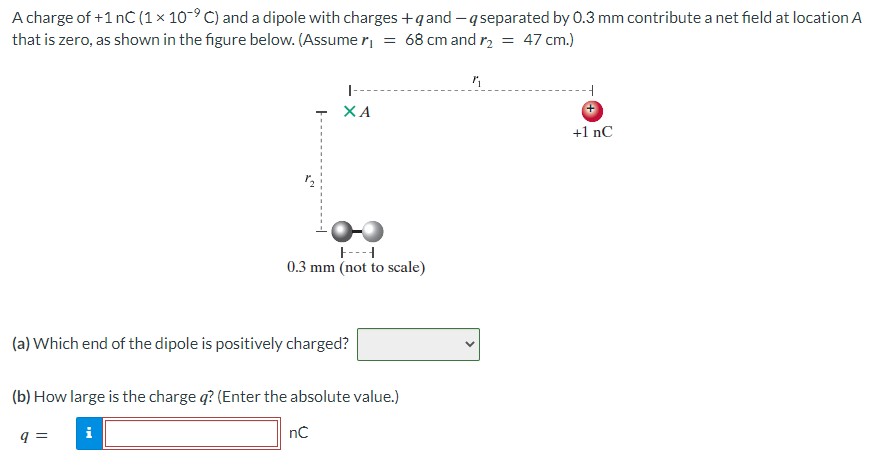A charge of +1 nC (1×10−9 C) and a dipole with charges +q and −q separated by 0.3 mm contribute a net field at location A that is zero, as shown in the figure below. (Assume r1 = 68 cm and r2 = 47 cm.) (a) Which end of the dipole is positively charged? (b) How large is the charge q? (Enter the absolute value.) q = nC
